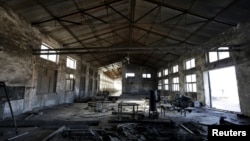Authorities in China are proclaiming a healthy job market, with the nation’s official unemployment rate last year standing at 4.2 percent.
But some analysts are questioning the official unemployment statistics, arguing that the slowdown of the world’s second-largest economy has already, and will continue to, put pressure on its lopsided job market over the next few years.
China’s top economic planner told a press briefing on Wednesday that the unemployment rate last year for urban workers stood at 4.2 percent – a figure that has consistently averaged between 4 percent and 4.3 percent for the past decade.
Unemployment rate
Last year’s unemployment rate was still below the government’s 4.5 percent target, Xu Xiaoshi, chairman of the National Development and Reform Commission, told reporters at the briefing.
Although an investigation into 31 Chinese cities found the actual unemployment rate stood at 5.1 percent, Xu brushed off concerns over the nation’s unemployment predicament.
“As you can see, unemployment in China has rarely triggered any social conflict or even posed instability on the society. Almost none in recent years,” Xu said, adding that the number of newly registered businesses reached 4.43 million last year. He said those businesses have created millions of new jobs.
The official, however, admitted the government’s attempts to curb overcapacity will increase unemployment in provinces such as Shanzi, Heilongjiang and Hebei, which have high outputs of steel and coal.
In addition, the commission set the nation's economic growth projection range at 6.5 to 7 percent for 2016.
According to a Caixin News report, the commission aims to cut excess production capacity of crude steel by 100 to 150 million tons over the next five years, citing an anonymous source.
Official data has shown that steel factories churned out 800 million tons of crude steel last year, or a 71 percent utilization rate, the report added.
Biggest economic woes
That means nearly 20 percent of the steel sector’s workforce may be eventually laid off. Already, gradual layoffs have been observed in the traditional heavy industries, said Jeff Crothall, spokesman of Hong Kong-based China Labor Bulletin.
“There is tremendous pressure on unemployment, particularly, in manufacturing, mining and old industries like iron and steel. A lot of people are being paid off in those areas,” he said.
It will be a question of how China balances its development and economic restructuring as new jobs have also been created in new industries such as service and information technology sectors, although some of them remain low-pay and low-skilled jobs, the labor activist added.
With the steel and coal sectors having been the country’s biggest employers -- with workforce of 5.8 million and 3.3 million employees, respectively — He Qinglian, a U.S.-based Chinese author and economist, argued that “bankruptcies in these two industries will inevitably lead to massive unemployment.”
Calling unemployment “China’s biggest economic woe,” she said she expects the number of steel companies to drop to 300, from the current 2,460, as the price of steel has declined to $0.14 per pound — “cheaper than cabbage” — while half of the country’s coal mines have shut down or suspended production.
Also, the rise in labor costs has seriously threatened China’s niche as the world factory as companies have moved to countries in Southeast Asia.
More than 4,000 companies in Dongguan of Guangdong province alone are said to have shut down last year, although the official data puts the figure at one-tenth of that, she argued.
Both Crothall and He called the official unemployment data seriously distorted, although it’s hard to gauge if the actual unemployment rate has exceeded the alarming 7 percent level as many have argued.
Economic restructuring
Cao Heping, professor of economics at Peking University, said the fact that the nation’s massive self-employed agricultural sector has been excluded in the calculation leads to the unemployment data’s distortion.
But he disagreed that unemployment will pose a serious challenge ahead for the local economy, which is going through its restructuring phase.
He argued that the service sector, which now accounts for 51 percent of the Chinese economy, will continue its growth momentum and release more job opportunities to offset the losses of manufacturing jobs.
“The service sector absorbs a much bigger workforce population than that of the manufacturing sector. Therefore, the future employment problem will relatively ease,” Cao said.
As a result of a more cautious outlook, companies in China will be more conservative about adding new workers this year, said Arthur Wang, managing director of Robert Walters China.
But the recruitment consultant added that he still expects to see “a stable stream of replacement positions as companies look to upskill their teams” and “top quality professionals are still highly sought after.”
That, however, means professionals who under perform or do not have the required skills will be edged out, Wang said, expecting the recruitment market in China to mature with stable hiring and salary levels.









